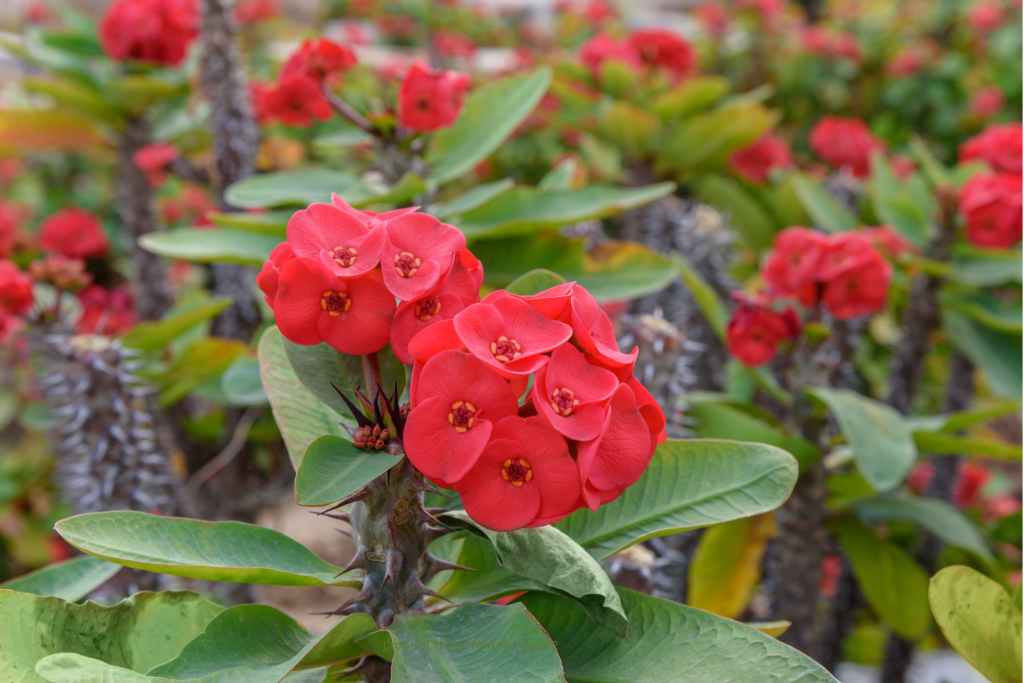
The Crown of Thorns plant, scientifically known as Euphorbia milii, is a unique and resilient succulent that has captivated gardeners and plant enthusiasts for centuries. Known for its thorny stems and vibrant flowers, this plant is a fascinating blend of beauty and toughness. Originating from Madagascar, the Crown of Thorns is now popular worldwide, both as an indoor houseplant and an outdoor garden plant in warmer climates.
Characteristics and Varieties
The Crown of Thorns is named for its spiky stems, which resemble the biblical crown of thorns worn by Jesus during his crucifixion. The plant features thick, thorn-covered branches and lush, oval-shaped green leaves. What truly sets it apart are its small but striking flowers, which come in shades of red, pink, yellow, and white, adding a splash of color to its otherwise rugged appearance.
Some popular varieties include:
Euphorbia milii var. splendens: Known for its large, showy flowers.
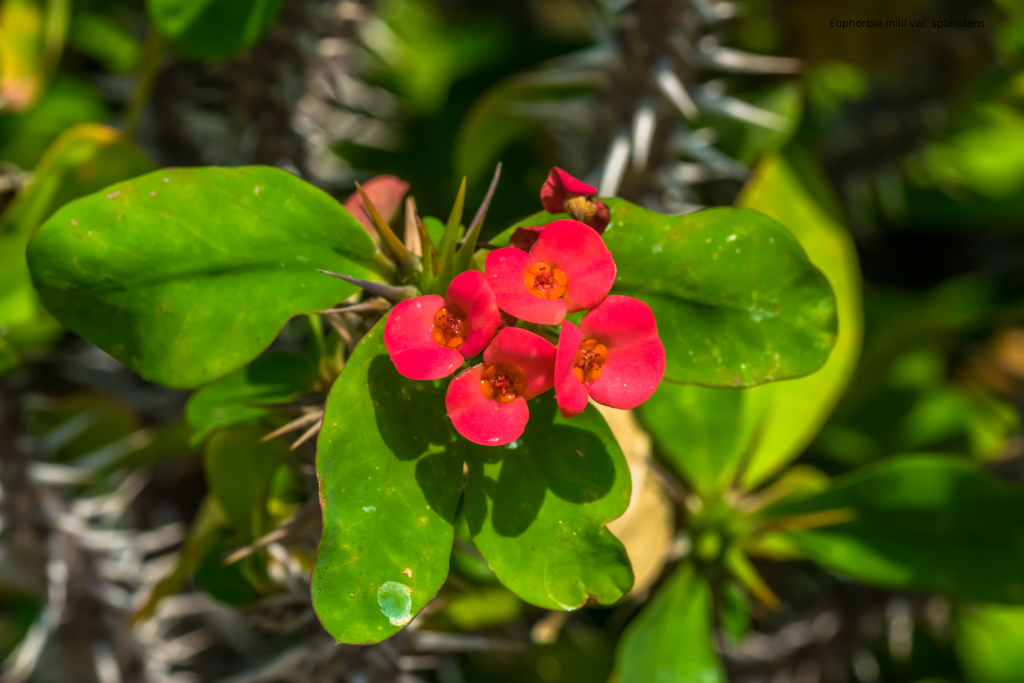
Euphorbia milii ‘Mini Bell’: Features smaller, delicate flowers and a compact growth habit.
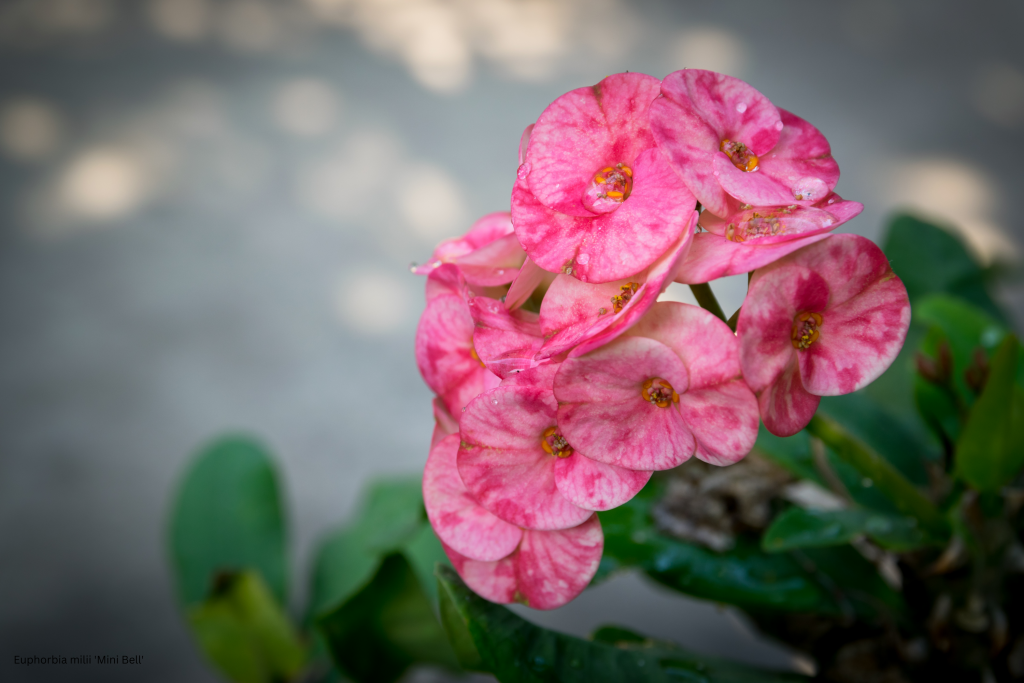
Euphorbia milii ‘Firecracker’: Boasts bright red flowers and a bushy form.
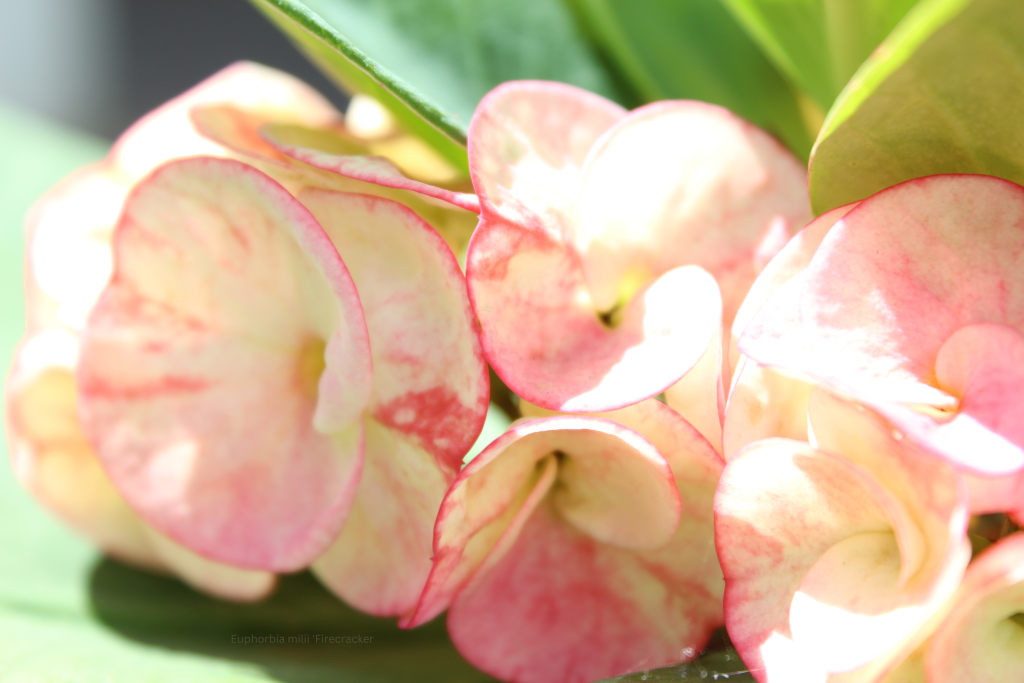
Growing Conditions
To successfully grow and care for a Crown of Thorns plant, it’s essential to replicate its natural habitat. Here’s a detailed guide on its requirements:
Light
Crown of Thorns plants thrive in bright, direct sunlight. They need at least 4-6 hours of sunlight each day to bloom profusely. Place your plant in a sunny window or a location where it can soak up plenty of natural light. If grown outdoors, ensure it receives ample sunlight but also provide some afternoon shade in extremely hot climates to prevent sunburn.
Watering
As a succulent, the Crown of Thorns is drought-tolerant and prefers infrequent watering. Allow the soil to dry out completely between waterings. Overwatering can lead to root rot, so it’s crucial to err on the side of underwatering. During the winter months, reduce watering even further, as the plant’s growth slows down.
Soil
Use a well-draining potting mix to prevent water from sitting at the roots. A cactus or succulent mix is ideal, or you can create your own by mixing regular potting soil with sand or perlite to improve drainage.
Temperature and Humidity
The Crown of Thorns prefers warm temperatures, ideally between 65°F to 90°F (18°C to 32°C). It can tolerate slightly cooler temperatures but should be protected from frost. Average household humidity is sufficient, and the plant is quite adaptable to varying humidity levels.
Fertilization
Feed your Crown of Thorns plant with a balanced, water-soluble fertilizer every 4-6 weeks during the growing season (spring and summer). Dilute the fertilizer to half strength to avoid over-fertilizing, which can damage the plant. Reduce feeding during the fall and winter months.
Pruning and Maintenance
Pruning
Pruning helps maintain the shape of the plant and encourages bushier growth. Use clean, sharp scissors or pruning shears to remove any dead or damaged branches. Be cautious of the plant’s toxic sap, which can irritate the skin; wearing gloves is recommended.
Cleaning
Dust can accumulate on the leaves and flowers, hindering photosynthesis. Gently clean the plant with a damp cloth or give it a light shower to keep it looking its best.
Propagation
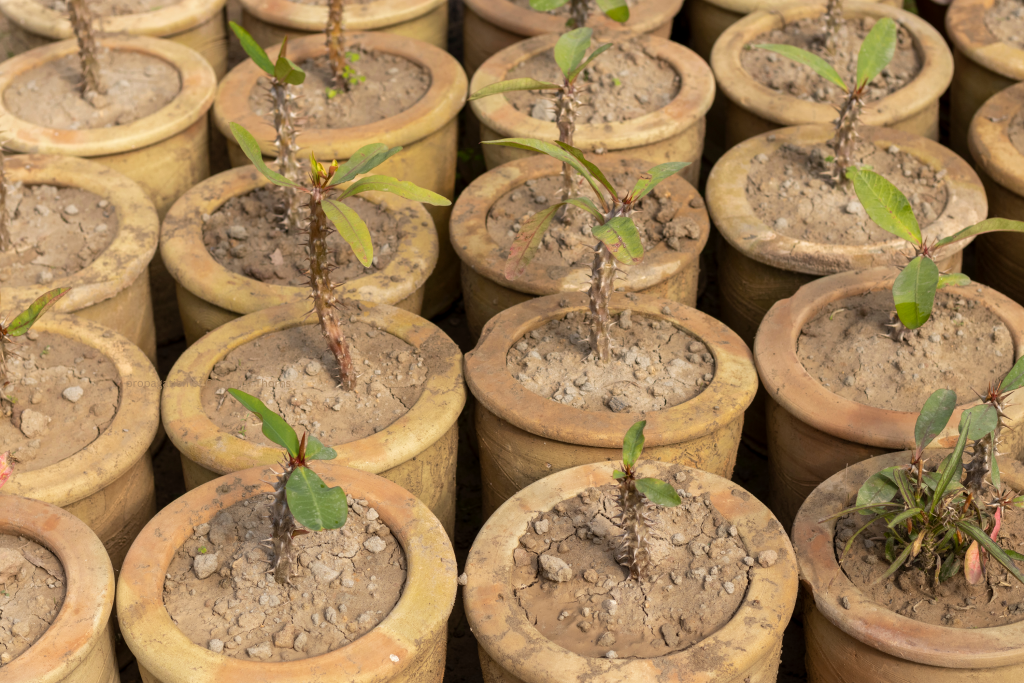
Crown of Thorns plants can be easily propagated from stem cuttings. Here’s how:
- Take Cuttings: Cut a healthy stem segment about 3-4 inches long.
- Dry Out: Allow the cut end to dry and callous over for a few days to prevent rot.
- Plant: Insert the calloused end into a well-draining potting mix.
- Water: Water sparingly until the cutting establishes roots, then resume regular care.
Common Problems and Solutions
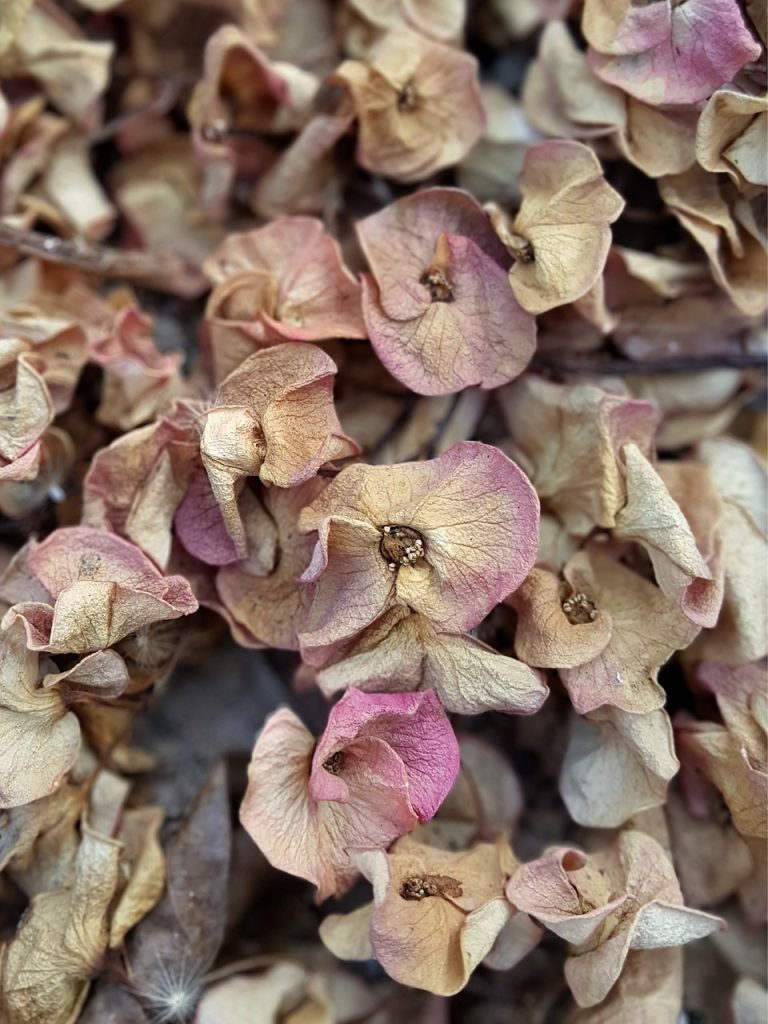
Leaf Drop
Leaf drop can occur due to sudden changes in light, temperature, or watering habits. Ensure consistent care and avoid moving the plant frequently.
Pests
Crown of Thorns plants can attract pests such as spider mites, mealybugs, and aphids. Regularly inspect your plant and treat any infestations promptly with insecticidal soap or neem oil.
Yellowing Leaves
Yellowing leaves can be a sign of overwatering or poor drainage. Ensure the soil dries out between waterings and improve drainage if necessary.
Toxicity Warning
The Crown of Thorns plant contains a milky sap that is toxic if ingested and can cause skin irritation. Keep it out of reach of children and pets, and wear gloves when handling the plant.
Conclusion
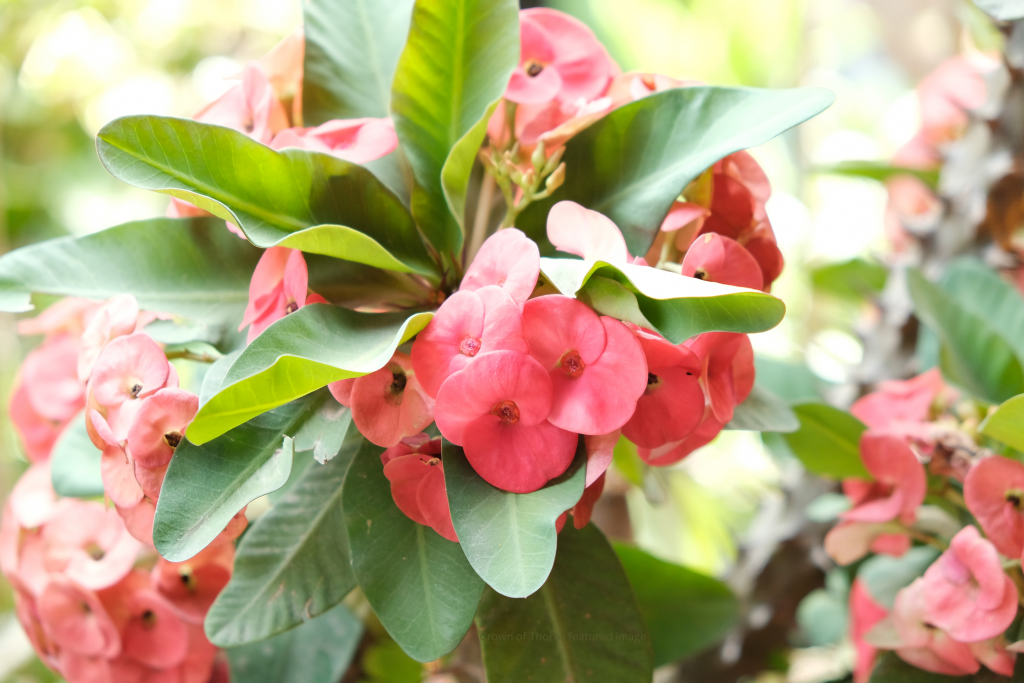
The Crown of Thorns plant is a remarkable addition to any plant collection, combining resilience with vibrant beauty. By providing the right light, soil, and care, you can enjoy the colorful blooms and unique appearance of this fascinating succulent year-round. Whether you’re a seasoned gardener or a beginner, the Crown of Thorns is sure to bring a touch of exotic charm to your home or garden.



